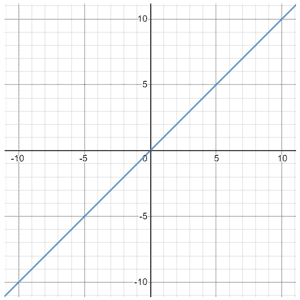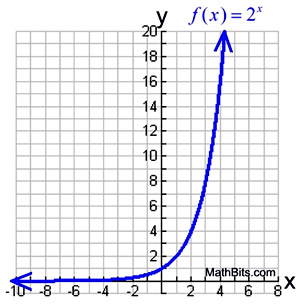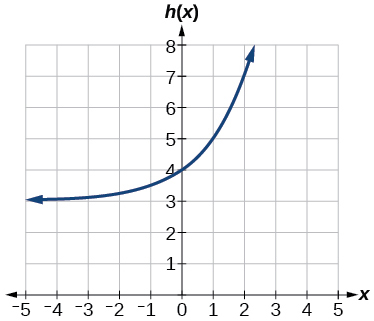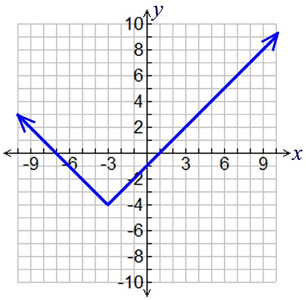Write the parent function and sketch a graph for a LINEAR function.
y = mx + b OR f(x) = x

Describe the transformations made to this parent function: g(x) = -|x| + 3
reflection, moved up (vertical translation)
(4x^2 - 3) + (5x^2 + 6)
9x^2 + 3
Factor:
3x^3 - 6x^2
3x^2(x - 2)
Identify the axis of symmetry:
x = 3
Write the parent function and sketch a graph for a QUADRATIC function.
f(x) = x2

Describe the transformations made to this parent function:
g(x) = 1/2|x - 4|
vertical shrink, moved right (horizontal translation)
(8x^2 + 2x + 9) - (3x^2 + 6x + 4)
5x^2 - 4x + 5
Factor:
x^2 + 7x + 12
(x + 4)(x + 3)
Indentify the zeros:
-4 and 0
Write the parent function and sketch a graph for an ABSOLUTE VALUE function.
f(x) = |x|

State the domain and range:
D: all reals
R: y ≤ 2
(-2x^2 - 10) + (4x^2 +11x)
2x^2 + 11x - 10
Factor:
x^2 - 9x + 18
(x - 6)(x - 3)
Find the axis of symmetry:
f(x) = x^2 + 6x - 16
x = -3
Write the parent function and sketch a graph for an EXPONENTIAL function.
f(x) = bx OR f(x) = 2x

State the domain and range:

D: all reals
R: y > 3
(-7x^3 + 2x - 1) - (3x^2 + 6x + 4)
-7x^3 - 3x^2 - 4x - 5
Solve:
3x^2 - 3x - 18 = 0
3 and -2
Find the vertex:
f(x) = x^2 + 6x - 16
(-3, -25)
Which function family does f(x) = 3 belong to?
linear
Evaluate: f(3)

2
(5x^2 - 2x + 9) - (-7x^2 + 6x - 4)
12x^2 - 8x+13
Solve:
2x^2 + 5x = -3
-3/2 and -1
Find the zeros:
f(x) = x^2 + 6x - 16
-8 and 2
